Overview
Students will use their knowledge of facial anatomy to make an expressive self-portrait using oil pastel.
Materials and Tools
- Colored paper, preferably black
- Oil pastels
- Mirrors
Objectives
Students will understand that:
- Artists can convey emotion through their self-portrait.
- Artists can exaggerate their use of color, shape, line, texture, or details to make an expressive self-portrait. .
Students will be able to:
- Use their understanding of facial anatomy to accurately place their facial features in their drawing.
Activities
Exaggerated Features
Introduce expressive self-portraits sharing the following definitions and examples.
An expressive self-portrait is an artwork where the artist depicts themselves to convey their emotions, inner thoughts, or personal experiences, rather than a strictly realistic representation, to allow the viewer to feel a connection to the artist’s emotional state.
Close Looking
Artists can exaggerate elements of a self-portrait to express emotion.


Artists can also focus on drawing a specific facial expression to convey emotion.
Ask:
What colors, textures, or details do you notice in each portrait?
Which might be exaggerated?
What facial expressions do you notice in each?
Facial Expressions
Have students look into a mirror and practice making various facial expressions.
Have students observe and trace the shapes of various features as they make facial expressions.
Ask:
How does the shape of your eyes change when you make an angry face? A happy face?
How does the shape of your mouth change when you make a silly face? A surprised face?
Facial Expressions
Give each student a mirror to observe the different relationships between facial features. Guide students through the steps to create a basic under drawing for a self-portrait. Use the following question as prompts as you draw each feature.
Demonstrate and encourage students to:
- Start with light lines.
- Work from simple to detailed and big to small.
- Fill their entire page with their drawing.
Tell students that this drawing will be an ongoing work-in-progress that will change as they add to it in stages and can be edited throughout.
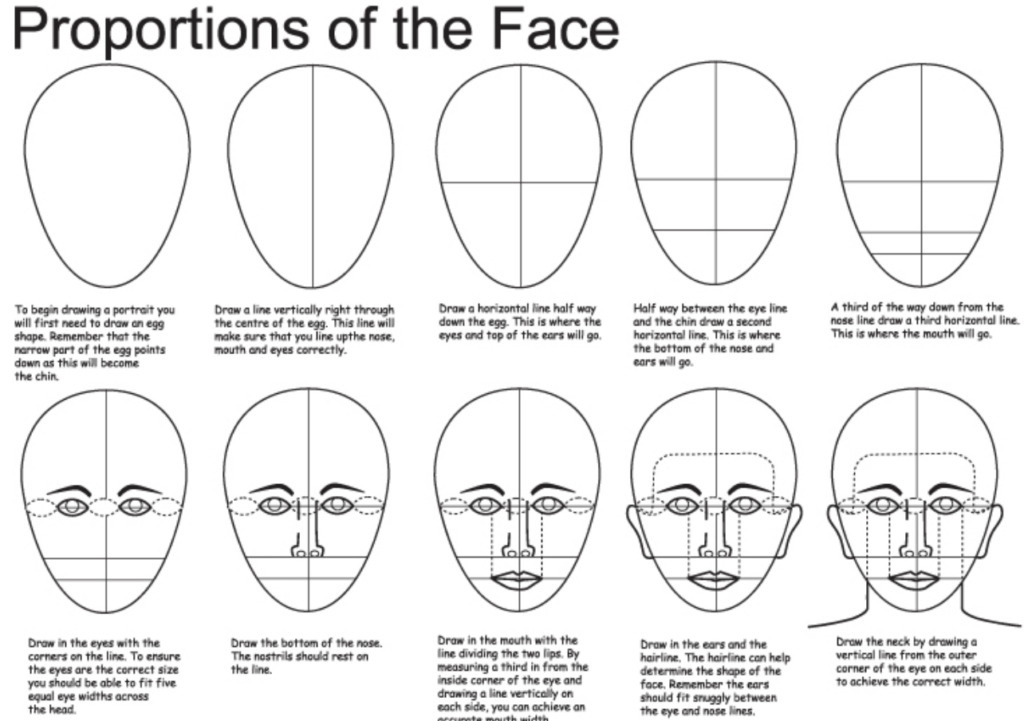
Start with the Basics
Ask:
What’s a good shape to draw your head?
Demonstrate drawing a basic shape for your head.
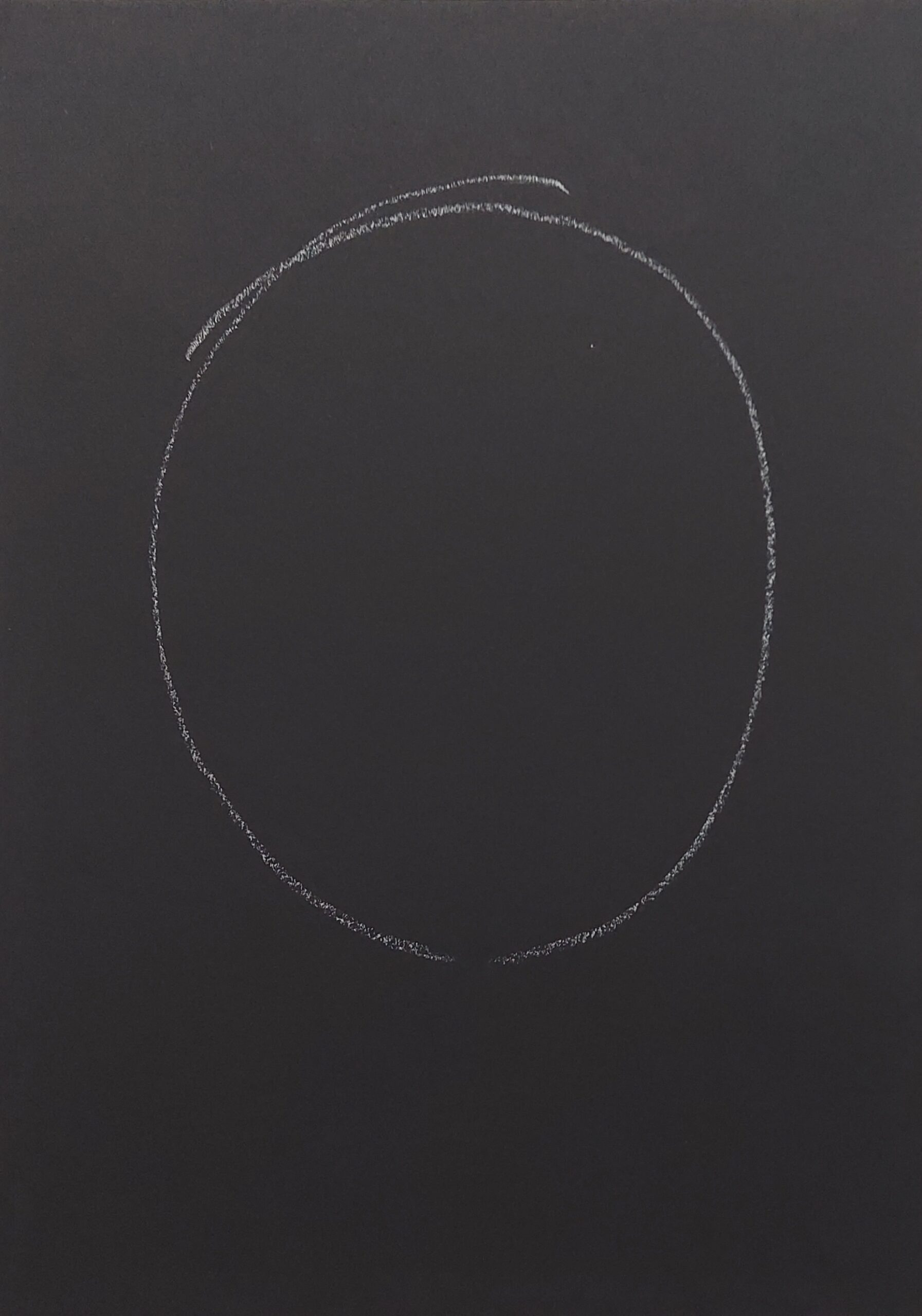
Correct your mistakes.
Demonstrate how to “rub out” a mistake when correcting your drawing.
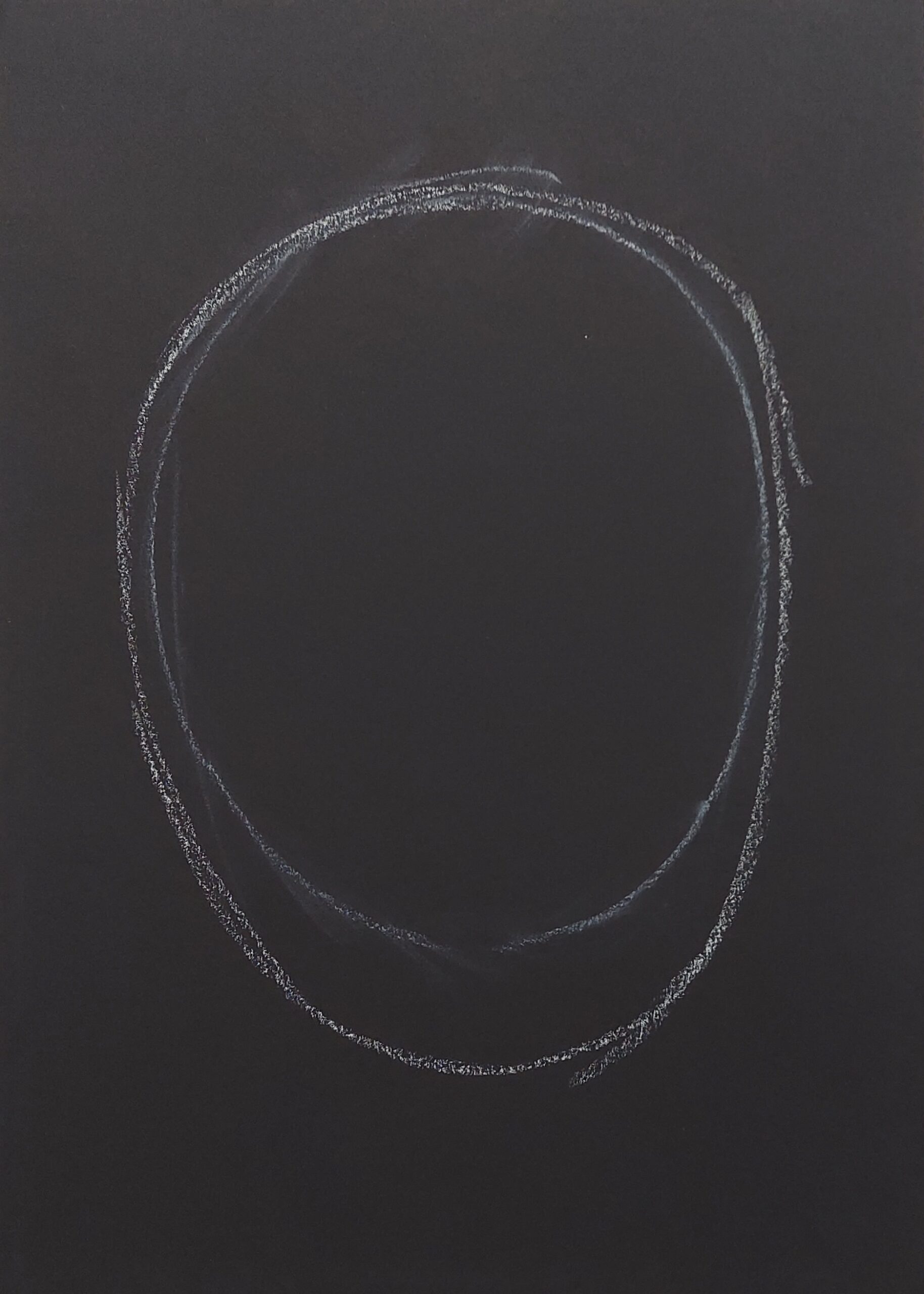
Add Light Guidelines
Demonstrate drawing lines to divide your head shape in half vertically and horizontally.
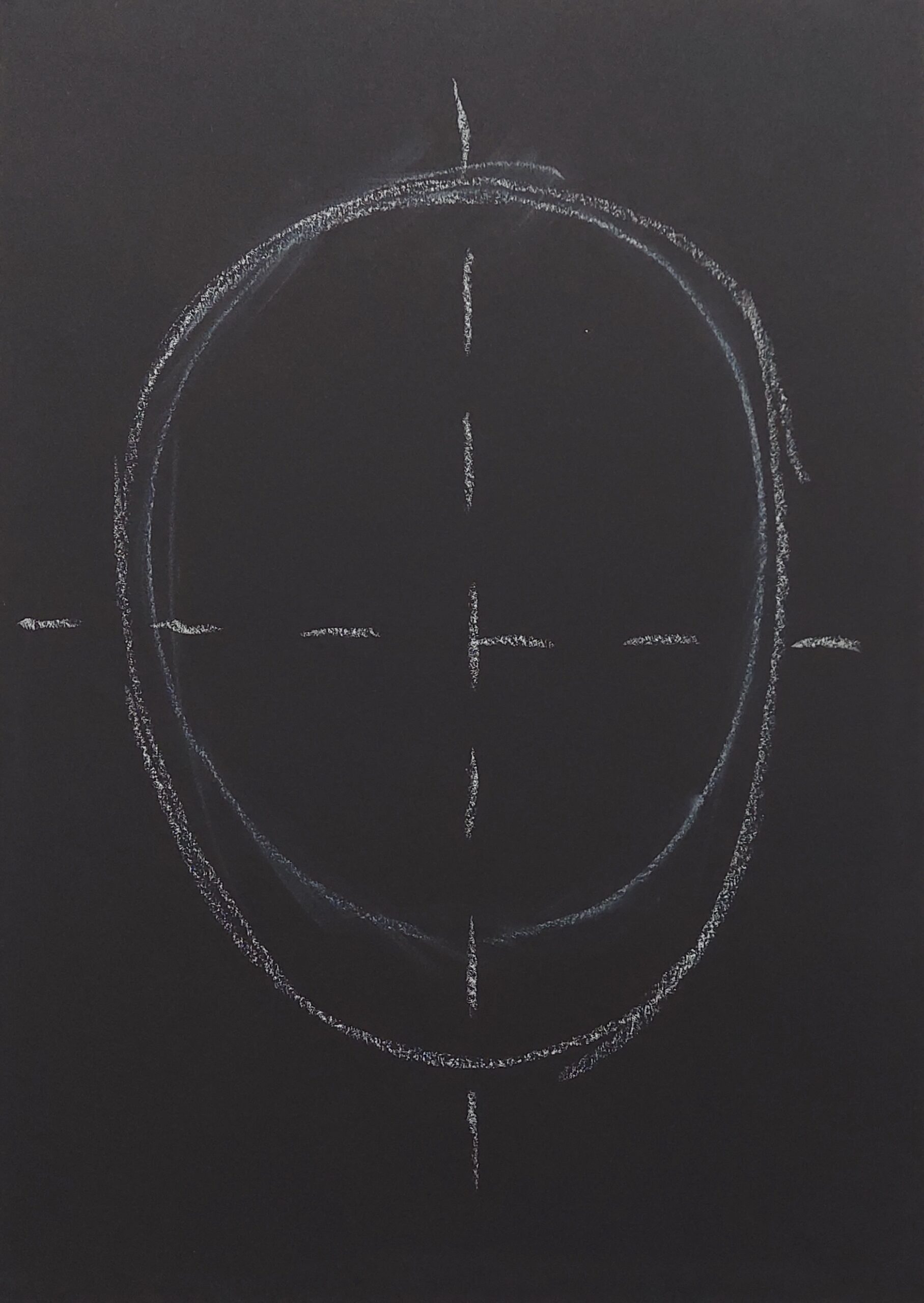
Draw shapes for the eyes, nose, and mouth.
Have students look into their mirror.
Ask:
Where do your eyes belong?
What are good shapes to draw your eyes?
Where does your nose belong?
What’s a good shape to draw your nose?
Where does your mouth belong?
What’s a good shape to draw your mouth.
Demonstrate drawing your eyes, nose, and mouth close to the appropriate guidelines.
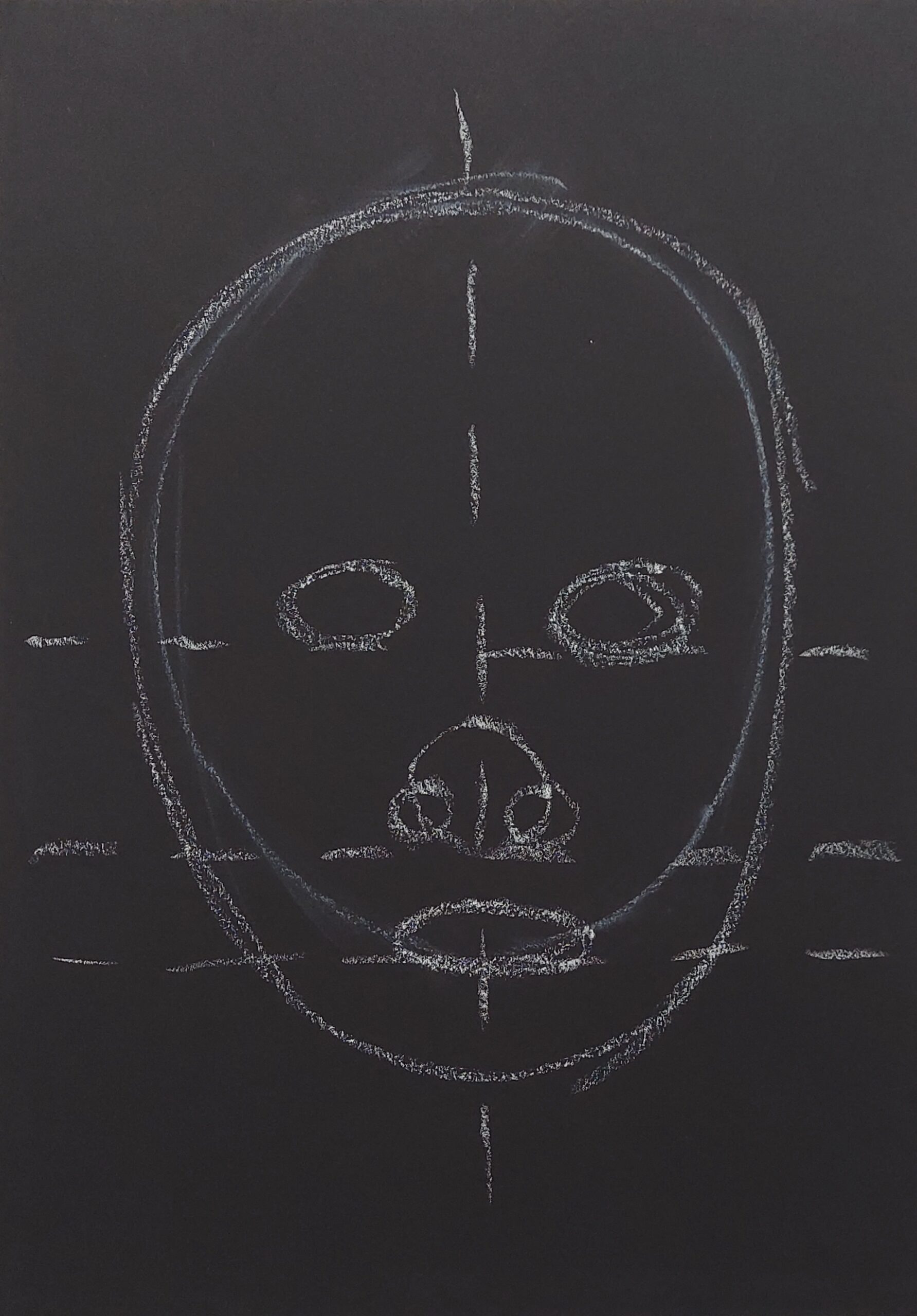
Draw your eyebrows, ears, hairline, and neck.
Ask:
Where do you see the eyebrows on your face?
Where do your ears belong?
Where does your hair belong on your head?
Where should you draw your neck?
Demonstrate drawing your eyebrows, ears, hairline, and neck in your self-portrait.
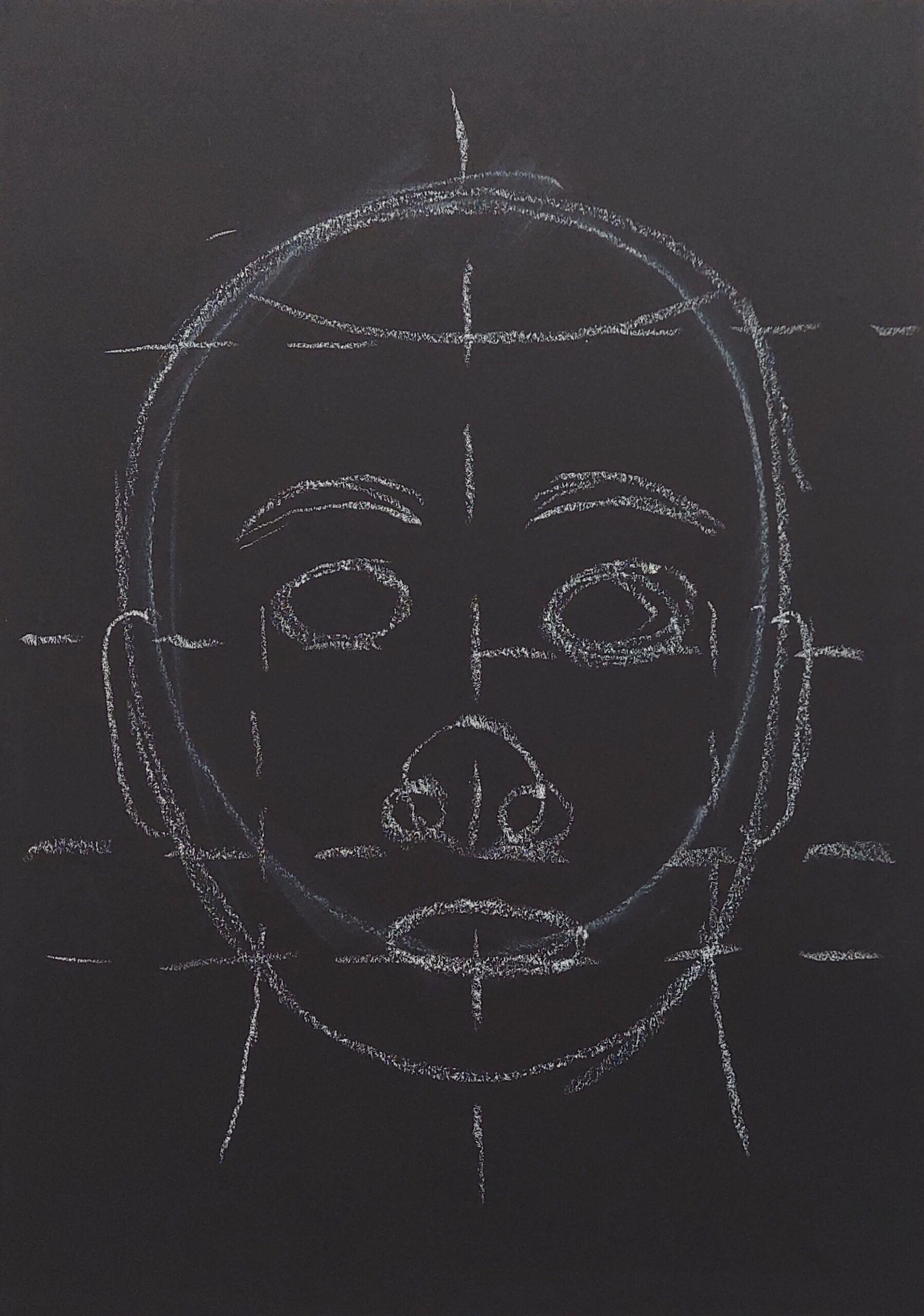
Reflection Questions for Discussion
- How does having an understanding of facial anatomy help in drawing your expressive self-portrait?
- What’s one thing you plan to adjust in your self-portrait next time?
Resources
Chris Ofilli, No Woman No Cry
Amy Sherald, They Call Me Redbone but I’d Rather Be Strawberry Shortcake, 2009, Oil on canvas

